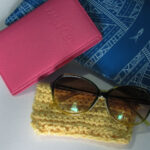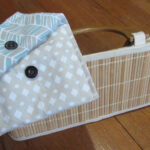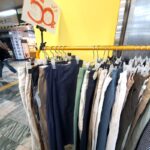A Great Japanese Kimono Experience with Sono Kimono
The Cultural Alliance of Fairfield County hosted a Japanese kimono experience called A Year in Kimono. It highlighted Japanese kimono culture. We met Robyn Mortiboys who is an apprentice kimono teacher and stylist at Sono Kimono in Norwalk, Connecticut.

Robyn created Sono Kimono to get back into a childhood hobby. She wanted to share her love of Japanese culture and kimono with others. Now she teaches others how to properly wear kimono and also offers different events and kimono lessons in Norwalk.
Japanese Kimono History
At this event we learned all about the kimono and how this type of traditional dress shows off the fabric and not the shape of the body. It’s all about the style and design.

Kimono styles and fabrics vary depending on both the season and the occasion. The kimono tells a story about who is wearing it and what they are involved in.
Heavier fabrics are used for winter months, while cotton or linen are used in the summer. Cotton and linen are also the most casual types of kimono. Gold or silver fabrics mean the event has more formality. The image below shows a bridal kimono.

Over time kimono styles have changed. Some of this is due to Western influence. The image below shows kimonos in the Edo Period (1603 to 1867).

Today kimonos are not worn every day in most parts of Japan. However you may see them during special occasions and in certain parts of Japan.
The styles also differ for men and women. Kimonos for men have more layers and have less decoration on the outside. Although, they may have special designs on the inside that you will only see once it is removed by the wearer.

Japanese Kimono Try-on
Then it was time to try on a kimono. Wearing a kimono is not as easy as just throwing on a bathrobe.

As you are putting it on, you have to make sure that the lines of the fabric are in the correct places. This will help it fall correctly. Also, you have to put it on in such a way that the folds are in the right places. There is a lot of tucking and shifting involved. Then there are two different strings that hold it in place. It also has to be tied at the correct length for your height.


Once the kimono is on, it’s time to put on the obi. This is the thick belt that goes around the kimono. Tying the obi was the hardest part of everything.


Once it is correctly tied, the thick part is turned around to the back of the kimono.

The following photos show some of the different styles of kimono. I was partial to the orange striped one.

We also viewed the footwear. Just like the kimono, these differ based on the occasion and the season. Winter styles tend to be elevated to keep the feet out of rain/snow. The ones to the far left have straw beds and are for summer months. In the middle are the burgundy ones which are more formal. The last pair are worn by men.



Look for Robyn at Sono Kimono in Norwalk, Connecticut. She also does presentations just like this Japanese kimono experience at various libraries in Connecticut. This event was held at the Stratford Public Library in Stratford, Connecticut.
Then see her kimonos featured at the fall festival held by the Japan Society of Fairfield County. The festival was held in September last year. You can check out their website for future dates.






